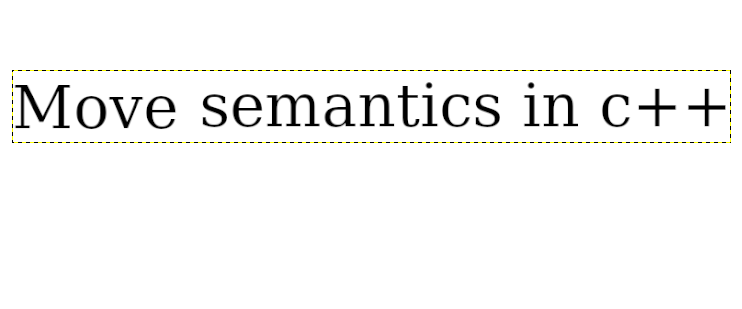
C++
What is Move Semantics in C++?
Move semantics is a feature introduced in C++11 that allows the efficient transfer of resources from one object to another. It is a powerful feature that can significantly improve the performance of your code by reducing the number of unnecessary copies and allocations. In this article, we will explore what move semantics are, how they work, and how you can use them in your own code.
What are Move Semantics?
In C++, objects are typically passed by value, which means that a copy of the object is made when it is passed to a function or returned from a function. This can be inefficient, especially for large objects that require a lot of memory to store. Move semantics provide a way to transfer the resources of an object to another object without making a copy. This can be much more efficient, especially for objects that are expensive to copy.
Move semantics are implemented using rvalue references, which are a new type of reference introduced in C++11. Rvalue references are used to bind to temporary objects, which are objects that are about to be destroyed. By using rvalue references, you can move the resources of a temporary object to another object without making a copy.
How do Move Semantics Work?
#include <iostream>
class MyObject {
public:
MyObject() {
std::cout << "Constructor called" << std::endl;
}
MyObject(const MyObject& other) {
std::cout << "Copy constructor called" << std::endl;
}
MyObject(MyObject&& other) {
std::cout << "Move constructor called" << std::endl;
}
~MyObject() {
std::cout << "Destructor called" << std::endl;
}
};
MyObject createObject() {
return MyObject();
}
int main() {
MyObject obj = createObject();
return 0;
}
In this example, we have a class MyObject with a constructor, a copy constructor, a move constructor, and a destructor. We also have a function createObject that returns a MyObject object. In the main function, we call createObject and assign the result to an object obj.
When createObject is called, a temporary MyObject object is created. Since the return value of createObject is a temporary object, it is an rvalue, and the move constructor is called to transfer the resources of the temporary object to the object obj. This is much more efficient than making a copy of the temporary object, as it avoids unnecessary allocations and deallocations.
How to Use Move Semantics in Your Code
To use move semantics in your code, you need to define a move constructor for your class. A move constructor is a special constructor that takes an rvalue reference as its argument and transfers the resources of the object to another object. Here is an example of a move constructor for the MyObject class:
MyObject(MyObject&& other) {
// Transfer the resources of the other object to this object
}
You can also define a move assignment operator to transfer the resources of an object to another object. Here is an example of a move assignment operator for the MyObject class:
MyObject& operator=(MyObject&& other) {
if (this != &other) {
// Transfer the resources of the other object to this object
}
return *this;
}
By defining move constructors and move assignment operators for your class, you can take advantage of move semantics to transfer the resources of your objects efficiently. This can be especially useful for large objects that are expensive to copy.
Conclusion
Move semantics are a powerful feature in C++ that can significantly improve the performance of your code by reducing the number of unnecessary copies and allocations. By using rvalue references and move constructors, you can transfer the resources of an object to another object efficiently. This can be especially useful for large objects that are expensive to copy.
I hope this article has given you a better understanding of what move semantics are and how you can use them in your own code. If you have any questions or comments, please feel free to leave them below.
References
Kaan Karaalioglu
SOFTWARE
c++ cpp move semantics rvalue references